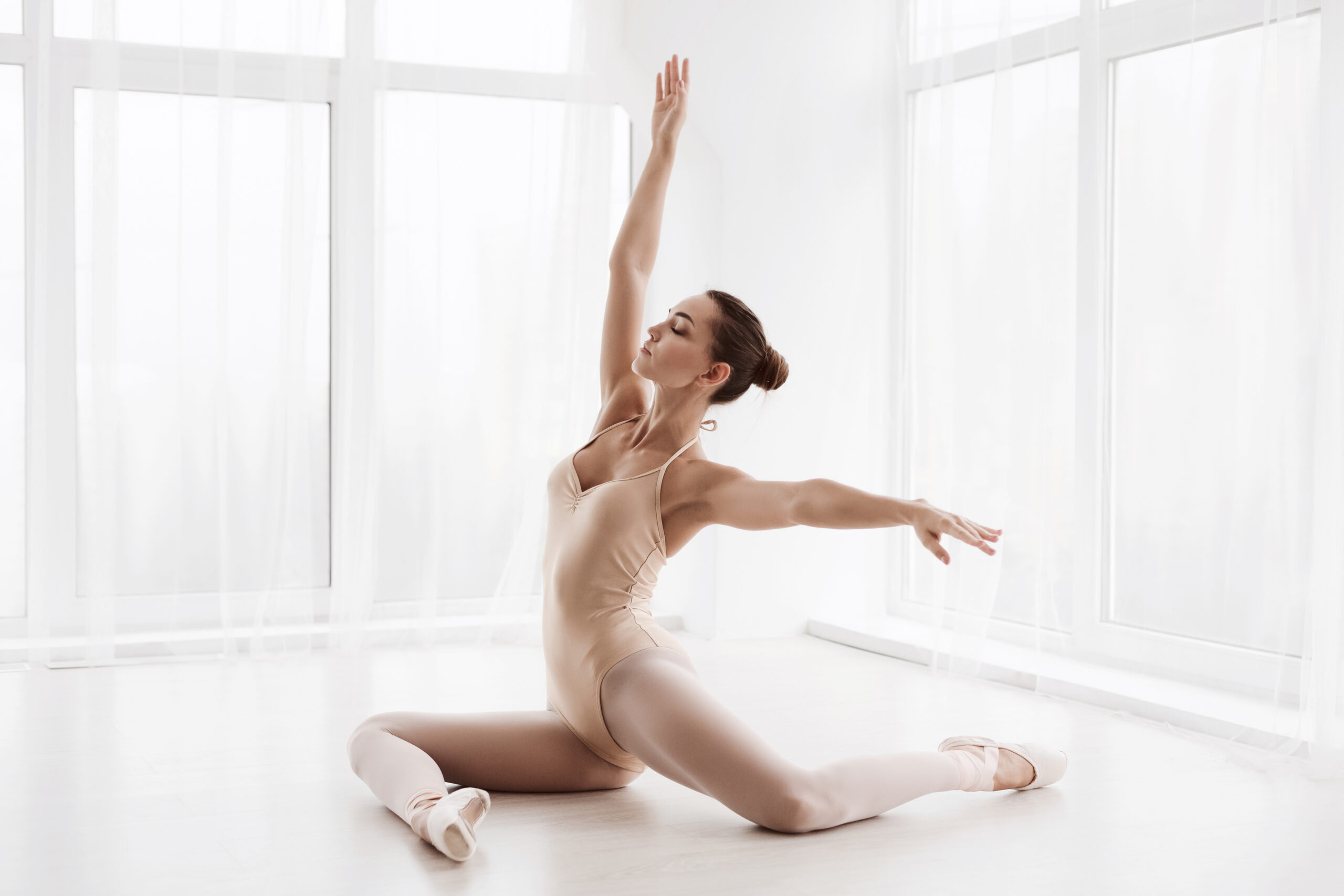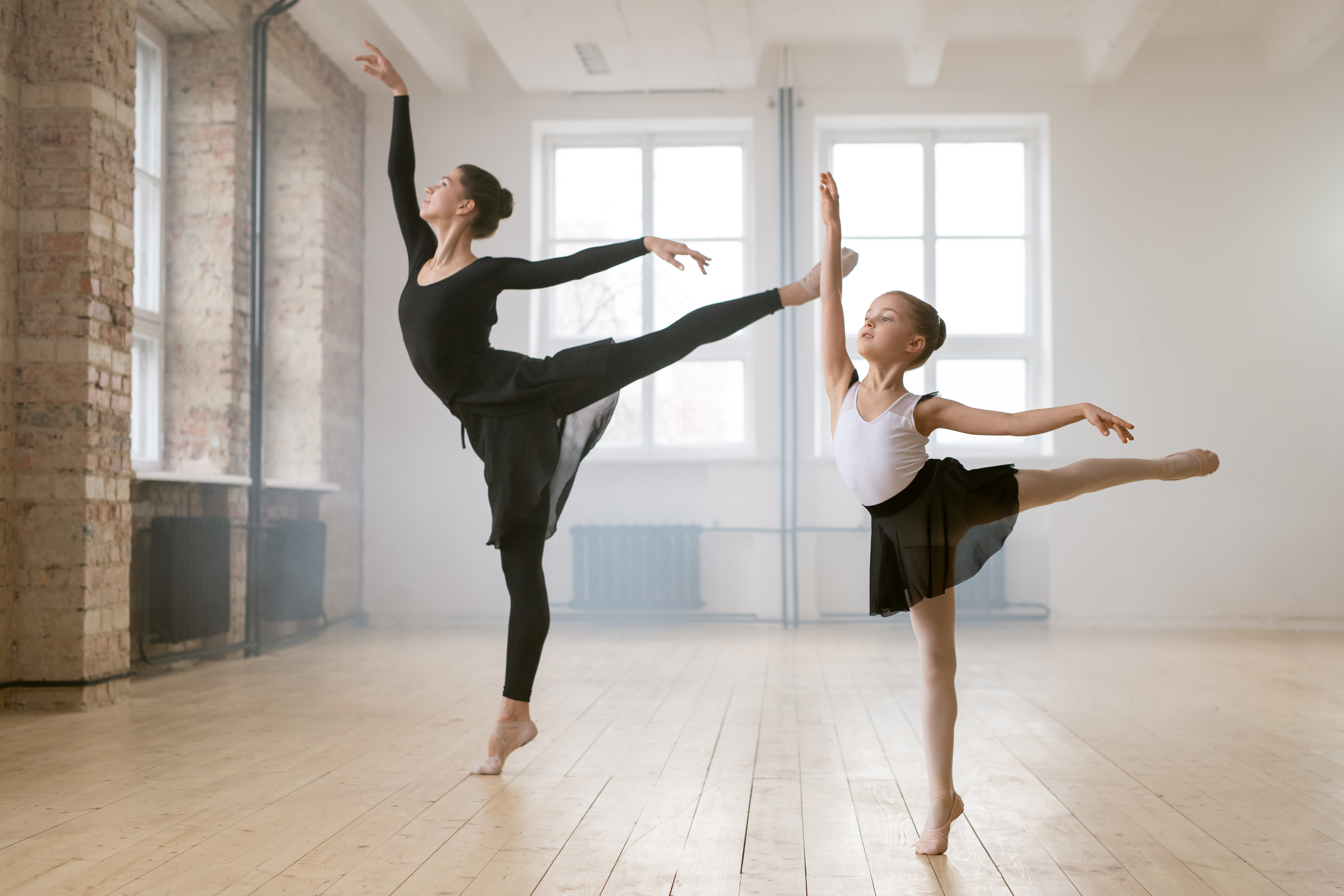Ballet dancing 💃🏻 🩰 🎵
Ballet is a classical stage dance performed alone or in a group in theatres, operas or other show stages. Ballet dancing originated in the 16th century at noble courts in France and Italy.
It developed into a rather quiet but technically very demanding dance that is very popular with all age groups. Ballet choreographies always tell a story, which makes attending a ballet performance very interesting.
History of origin
Ballet dancing first appeared on the scene in the mid-16th century when dance performances were held at royal courts. Dancers at that time came from France and Italy, where the first performances also took place. This initially gave rise to the court ballet, which some time later, however, became much more professionalised and was performed to thousands of enthusiastic people at a large performance in Paris at the end of the 16th century.
In the decades that followed, dance was developed further and further, especially in France, with particular attention being paid to the classical and cultivated qualities of ballet. Ballet was performed more and more frequently in different venues and many ballet schools were opened.
Worldwide Spread
The neighbouring European countries also quickly took a liking to ballet and from the 19th century onwards ballet was spread to the rest of the world. Russia in particular became a stronghold of the dance. Ballet is also widespread in America, although the dance there is better known as modern dance, which is very close to ballet.
Music
Ballet was and is mainly danced to classical music. At some point, when special music was composed just for the dance performances, ballet music came into being. Ballet music mostly does without singing and only with instruments, although it always tells a story. This story is reinforced and expressed by the dance. Classically, ballet music is played by a full orchestra, which can also be live on site at larger events.
Dance styles
Ballet is not really divided into different dance styles, but into methods and teachings. There are some differences and subdivisions. These are country-specific and refer either to a particular method from a specific country, or to one or more teachers from that country. In the end, all ballet styles are very similar in their execution, so that as a layman you cannot see any differences in figures and steps.
The differences are only in some accents, how these figures are performed and especially in the way ballet is taught to the dancers.
French Method
Unsurprisingly, the French method refers to the type of ballet taught mainly at French dance schools. Yet this variation is very chic and elegant. It is very technical and has some very demanding elements. The clean and correct execution of all movements is particularly important, and French ballet schools place great emphasis on this. French ballet is particularly recognisable in the footwork and posture.
Cecchetti Method
The Cecchetti method is named after the Italian ballet master Enrico Cecchetti and refers to the Italian version of ballet dancing. It follows very strict training plans in order to rehearse all techniques with precision. It is also about understanding the theory behind it and then translating it into movements. This Italian method has not only taken place in Italy, but has had a worldwide influence on classical ballet.
Bournonville Method
The Bournonville Method is also named after a ballet celebrity. August Bournonville was a Danish ballet master who gave ballet its Danish touch. His style is strongly influenced by the French style and is very similar to it. Bournonville attached great importance to a graceful appearance of the ballerinas and ballerinos.
Also of great importance is the placement of the arms and legs during the dance, as well as the harmony with the music.
Royal academy of Dance Method
This method, named after the world’s largest ballet organisation in London, is also called the English version. The concept of this ballet school is used at many dance schools all over the world, as it is a very recognised method. In addition to discipline, the main thing taught here is the joy of ballet and care is taken to ensure that ballerinas and ballerinos are trained in an age-appropriate manner. Around the world, almost 250,000 dancers dance according to this teaching.
Vaganova Method
The Russian ballet style is known as the Vaganova method. It was invented by the ballet dancer Agrippina Jakowlewna Waganowa in St. Petersburg. She combined the French and Italian methods to create a new ballet teaching in combination with some of her own approaches. The own approaches mainly refer to the role of the dance teacher, as the success of the dancers depends on them.
As in the other methods, the Vaganova method places great emphasis on correct execution, coordination and strength endurance.
Balanchine Method
The last of the best known ballet methods is the American Balanchine Method. This was developed by the Russian choreographer George Balanchine, who brought Russian ballet to the USA. He placed great emphasis on the interaction of the dance with the music. He was also very strict and required certain skills from his dancers, as he had very precise ideas about ballet.
Description of Ballet dancing

Ballet is danced individually or in groups. The technique is learned first, and then choreographies are performed that have been rehearsed over a long period of time. The dance itself is very elegant and classical, adapting to the music and always telling a story. For figures and step sequences, the 5 basic positions of arms and feet in ballet are particularly important.
Basic Steps
The 5 ballet positions for the feet are simply numbered. In the first position the heels of the feet touch each other with the tips of the toes pointing outwards. In the second position the feet are aligned in the same way as in the first position, but the heels do not touch. In the third position the feet are in front of each other with the heel of the front foot touching the side of the back foot.
This position of the feet is also found in the fourth position, but here again the feet do not touch, but are one foot’s length apart. In the fifth and final position for the feet, they also stand in front of each other, whereby the toes should touch the heel of the other foot.
The positions of the arms are also simply numbered. In the first position the arms are tucked into the hips and in the second position they are extended straight out. For the third position, one arm is held up in the air in a semicircle with the other arm still extended outwards. The arm stretched upwards in a semi-circle remains in the fourth position, with the other arm now again braced at the hip. In the last position both arms are now stretched upwards in a semicircle.
Further Steps
The steps between the figures can also be divided into 5 categories. These are called Adagio, Pirouettes, Petit Allegro, Medium Jumps and Grand Allegro. Especially the steps that belong to the Grand Allegro are among the most famous movements in ballet dancing. This refers to the largest jumps in ballet. Petit Allegro are the smaller leaps and the intermediate leaps are called the medium leaps.
Figures
One of the most famous figures in ballet is probably the so-called toe dance, in which ballerinas and ballerinos stand on their toes. However, this figure is very difficult to learn and can cause pain, especially to inexperienced dancers. Other well-known figures are the Grand Jeté and the Grand Adage.
Other Movements
While dancing ballet there are an enormous number of figures, movements, jumps and step sequences that cannot all be listed. However, especially the more demanding figures should only be attempted in a dance school with competent teachers, otherwise the risk of injury is very high.
Worth mentioning about Ballet dancing
Even though many women dance ballet nowadays, they were still excluded in the beginning. It was not until the end of the 17th century that women were allowed to take part in ballet performances. Even today there are many debates about the position of women in ballet, as many figures, movements or steps are prescribed specifically for women or men, although they could be performed by either sex.
What kind of dance is ballet?
Ballet is a very classical dance that is classified as a stage dance. Performances therefore usually take place in theatres, operas or other show stages.
What do you need to know to dance ballet?
To be able to dance ballet, you need great flexibility, good basic physical fitness and, above all, a lot of discipline. If you have all this and are also motivated, you have the best prerequisites for learning to dance ballet.
Can anyone learn ballet?
Yes, anyone can learn ballet. Above all, age is not an exclusion criterion. However, you should be flexible, fit and motivated if you want to learn ballet.
Where does one dance ballet?
Ballet is danced all over the world, although its origins were in France and Italy. It’s best to find a dance school nearby that offers ballet dance classes.
Can you teach yourself ballet?
In the age of YouTube, you can certainly teach yourself ballet. However, in most cases it helps to attend a ballet school, as the dance teachers can give you lots of tips and the community with other dancers is also profitable.
What is the most important thing in ballet?
The most important thing in ballet is the dancers’ posture. You also have to be very motivated to learn to dance ballet, otherwise it is difficult to learn the sometimes very hard technique.
What is a ballet piece?
A ballet piece is the performance of a choreography by a ballet ensemble. Classically, a story is told to music and dance, which is performed in front of an audience.
What is the name of a ballet dancer?
A female ballet dancer is called a ballerina and a male ballet dancer a ballerino, although the masculine form is rarely used. The first ballerina to lead the group or be a soloist is called a prima ballerina.
